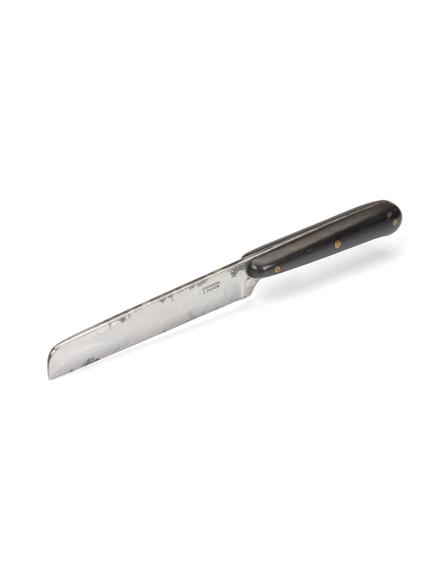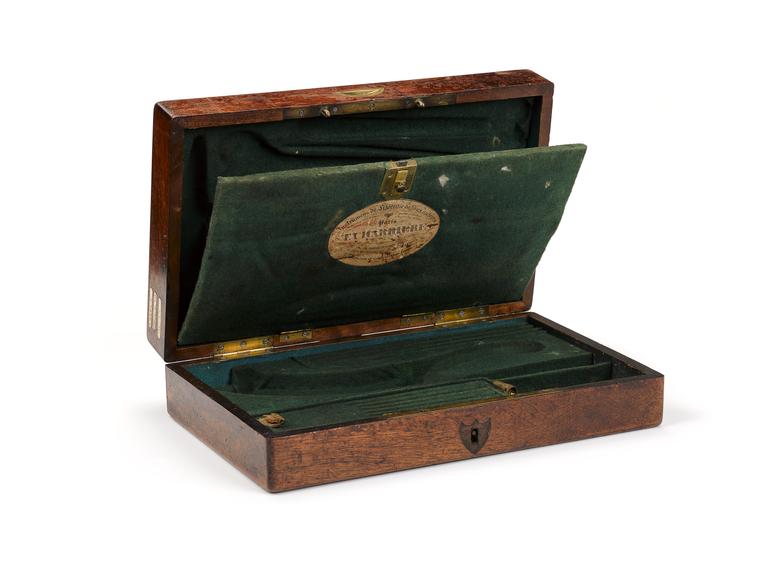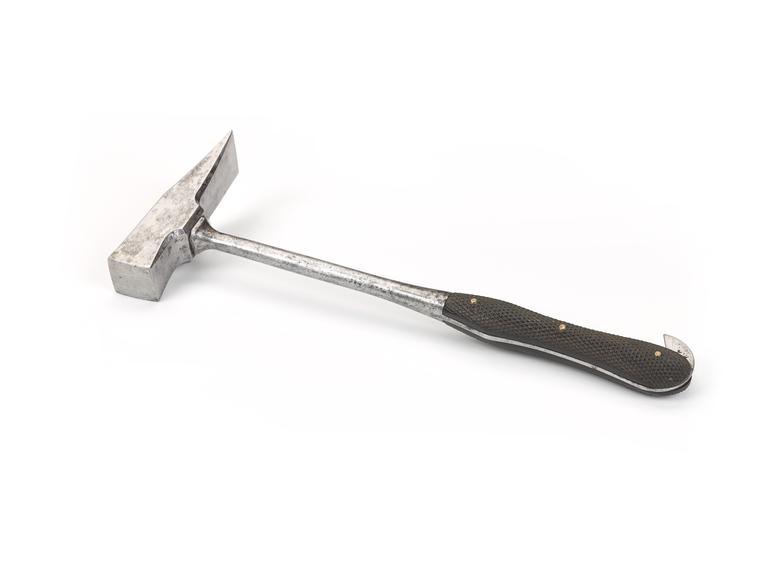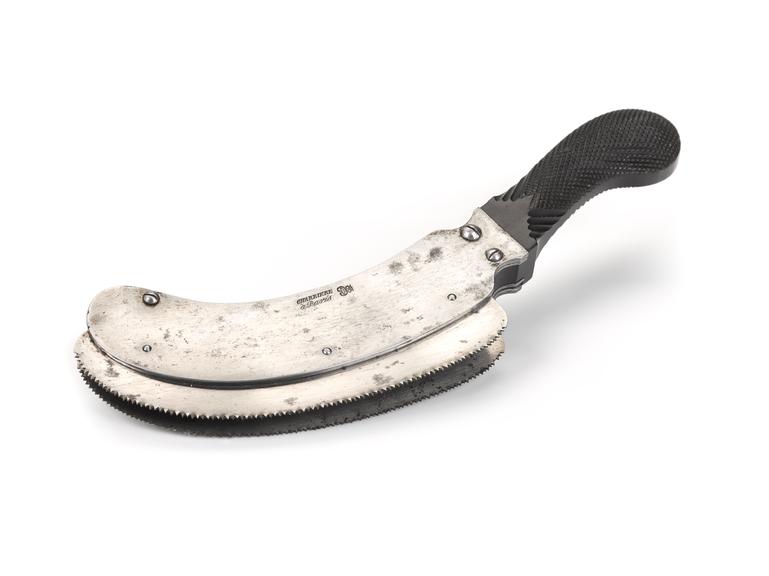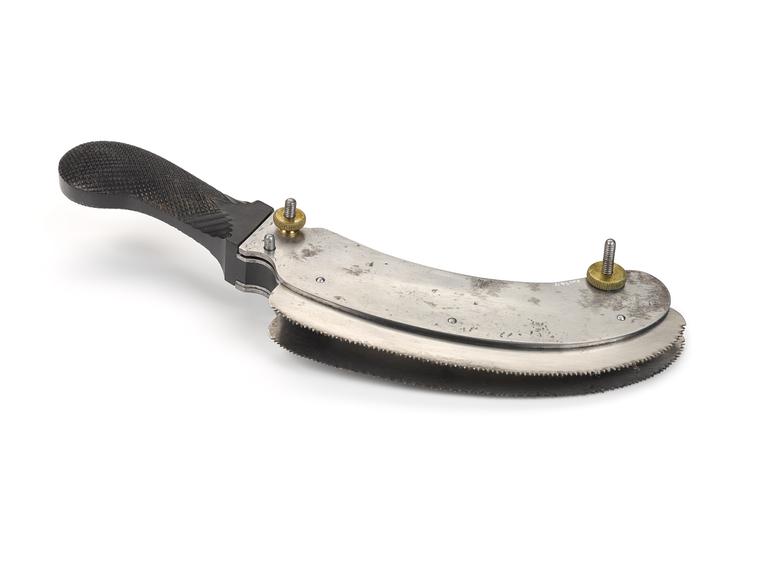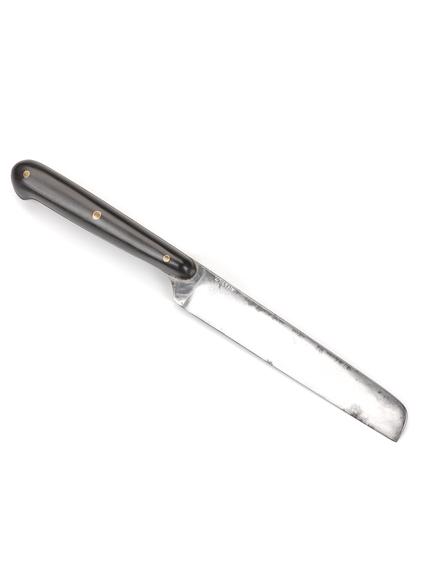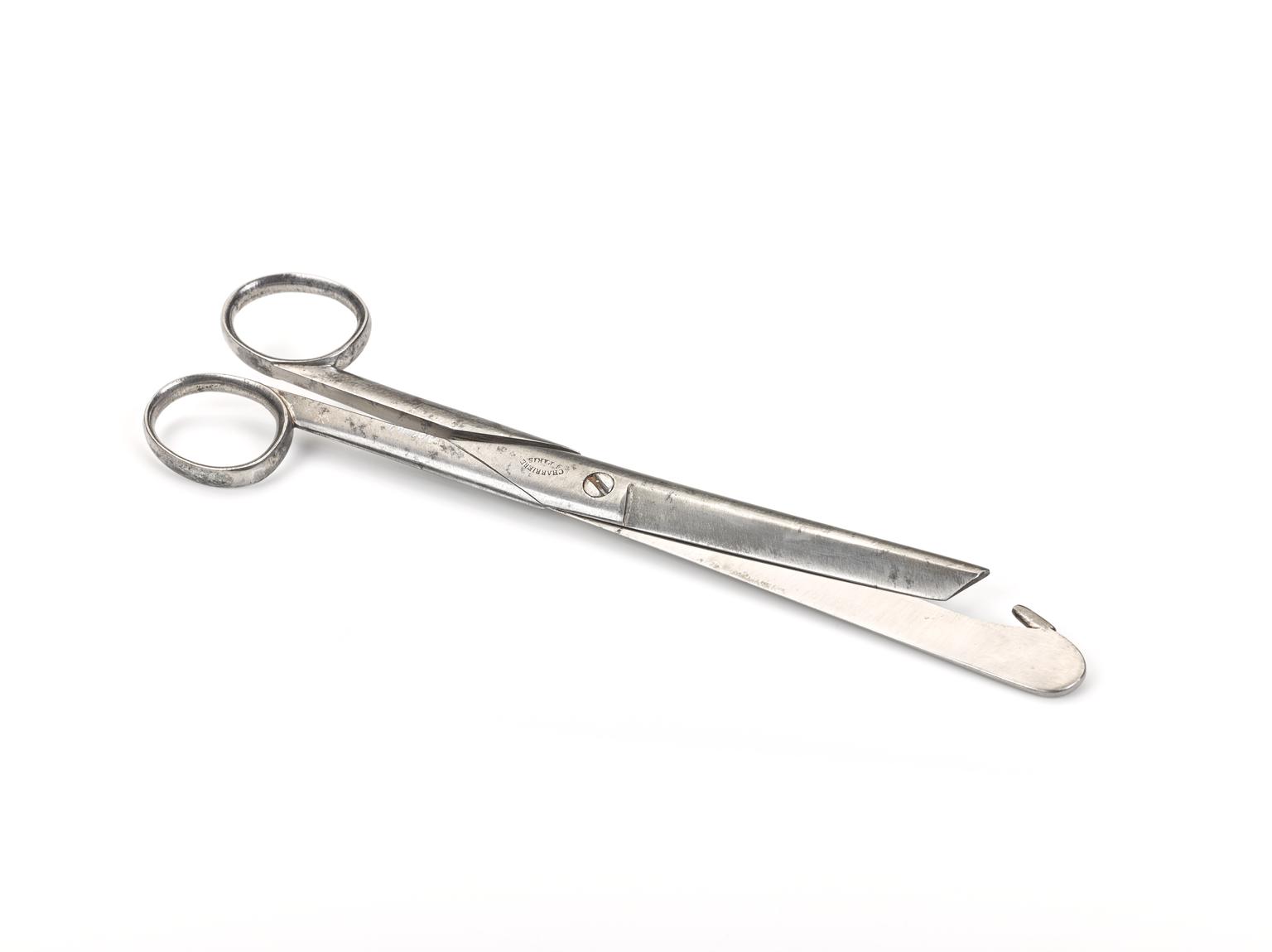
Bowel Scissors from post-mortem set
Bowel scissors, steel, by Charriere of Paris, 1820-1860
- Materials:
- steel
- Object Number:
- A106316 Pt1
- type:
- bowel scissors and surgery
- Image ©
- The Board of Trustees of the Science Museum, London

















Post mortem set, almost complete, in mahogany case, by Charriere of Paris, 1820-1860
The steel instrument set contains all the equipment needed to carry out a post mortem dissection. The set contains dissecting scissors, a large hammer, saws and knives, a so-called brain knife, three scalpels and three bistouries, which are long surgical knives. Most gruesome of all are the large and sturdy rib shears, for cutting open the ribcage, and the double bladed, curved spine saw. The set was made by the French surgical instrument maker Charrière.
Post mortem or autopsy only came into common practice in the early 1800s. The purpose of post mortem was to find the cause of death and establish whether the physician’s diagnosis when the patient was alive was correct. It also helped physicians to learn more about the internal symptoms and signs of disease. Today, post mortems are commonly associated with forensic science.

Bowel scissors, steel, by Charriere of Paris, 1820-1860
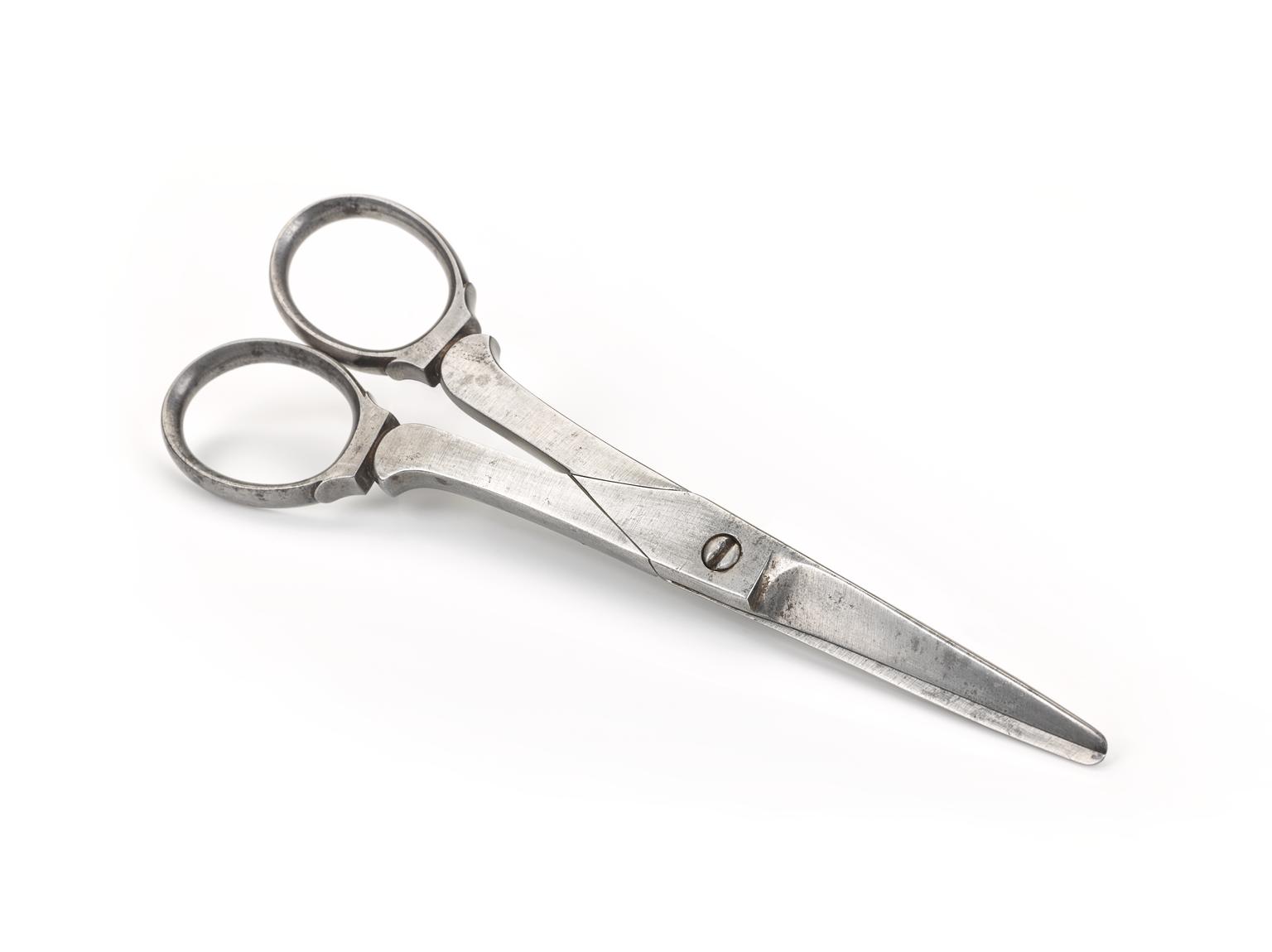
Post mortem hammer, steel and ebony, by Charriere of Paris, 1820-1860
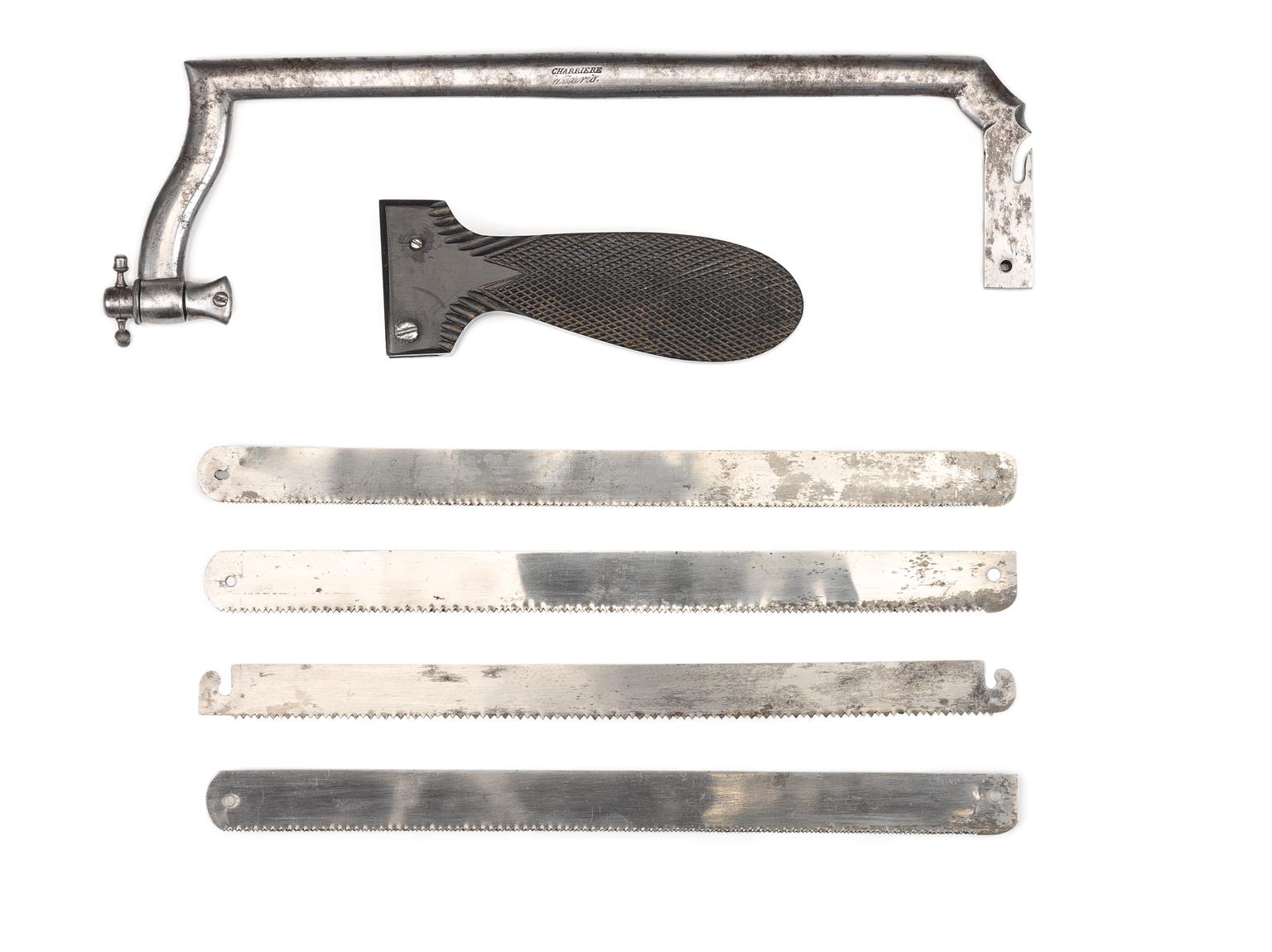
Post mortem saw, steel and ebony with four blades, by Charriere of Paris, 1820-1860, separate handle

3 knives, steel and ebony, by Charriere of Paris, 1820-1860
Brain knife, steel and ebony, by Charriere of Paris, 1820-1860


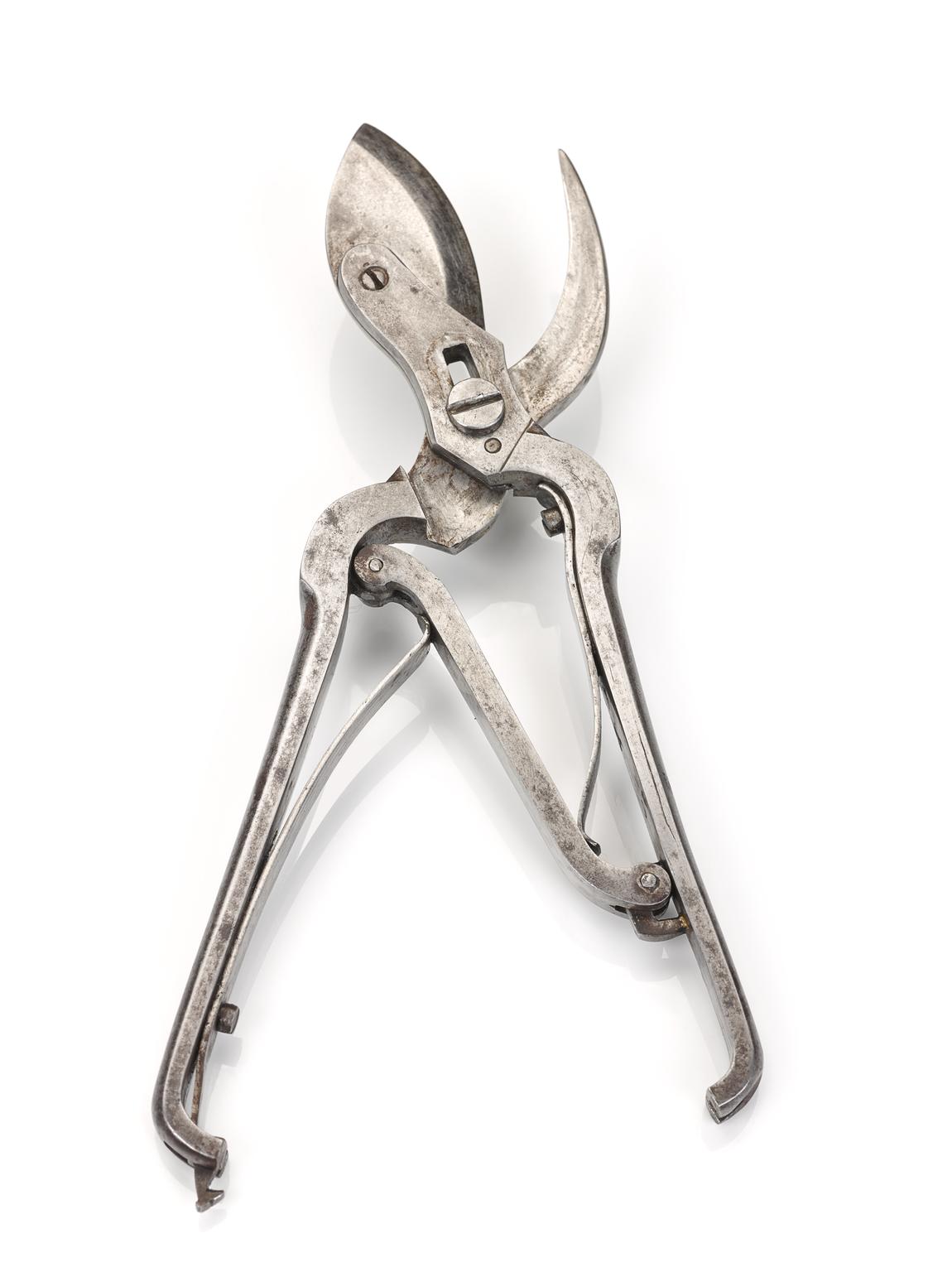
Rib shears, steel, probably French, 1820-1860
Mahogany case for post mortem set, by F. Charriere of Paris, 1820-1860

